Photos: Mega-drought
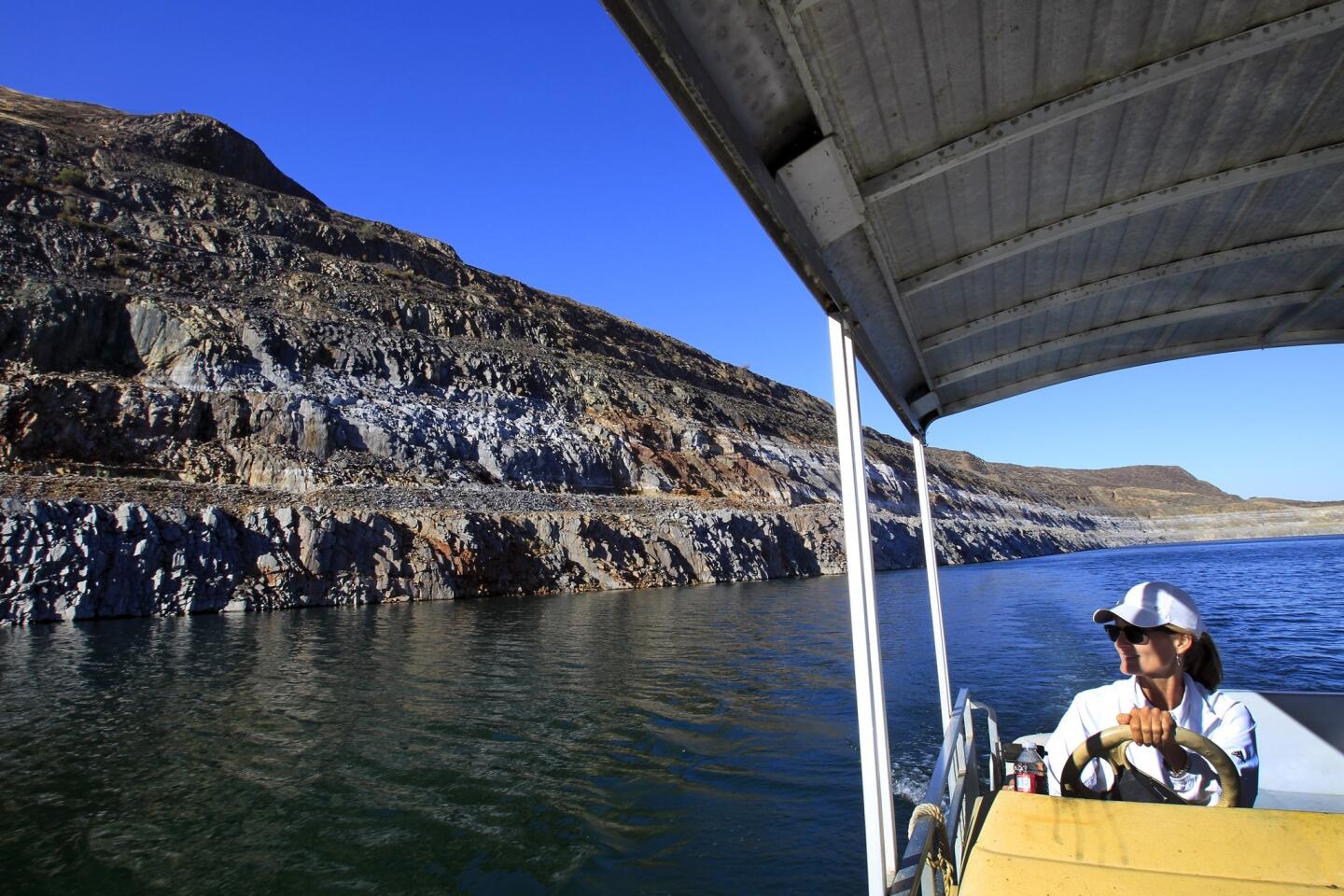
Sheri Shaffer, a manager with the Metropolitan Water District of Southern California, drives a boat past dry, rocky banks that reveal how far the water in Diamond Valley Lake in Hemet has receded. A group of scientists ran the state through a virtual mega-drought to see how it would fare. (Allen J. Schaben / Los Angeles Times)
How would California fair in a prolonged period of parched conditions? Fairly well, a study finds.
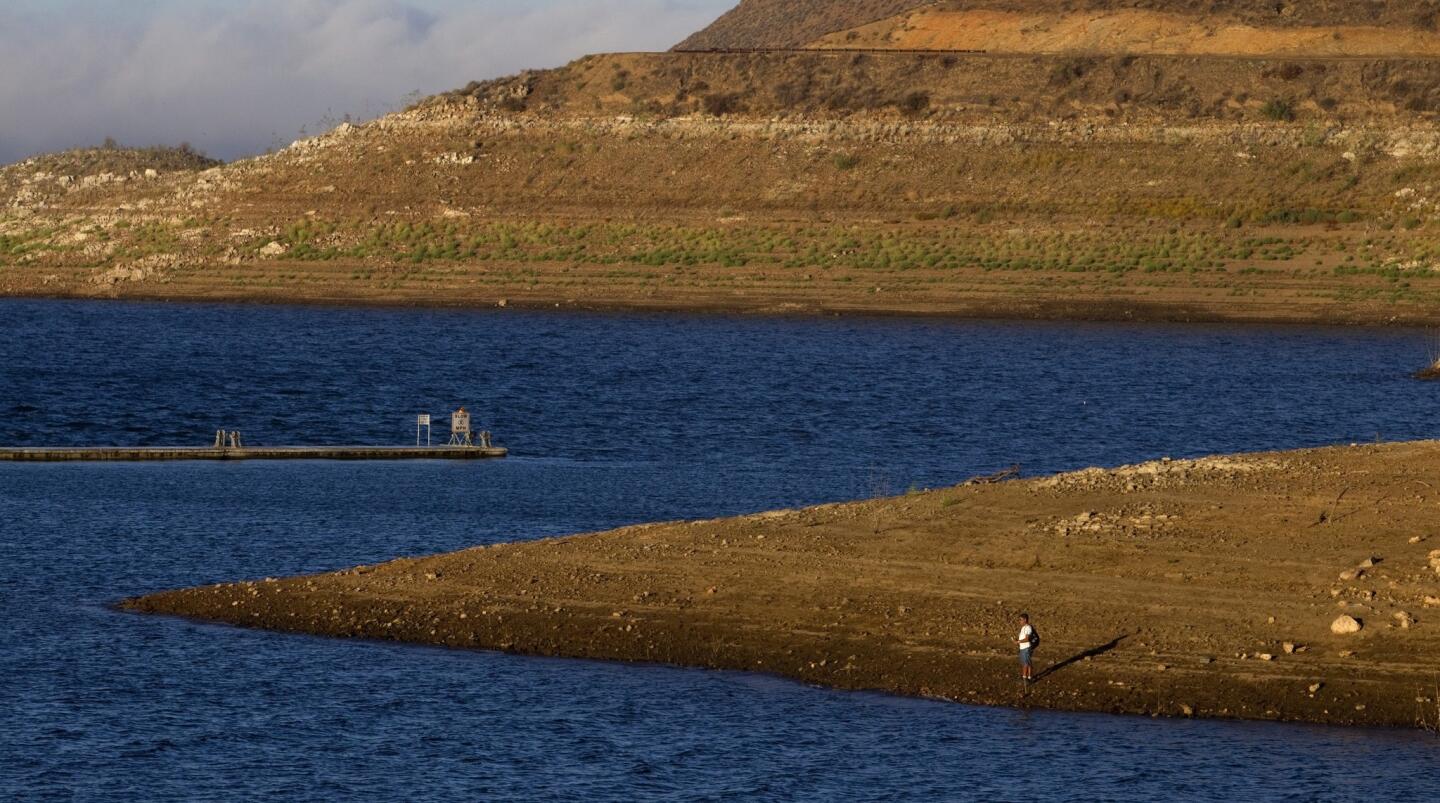
At sunrise, the effects of California’s ongoing drought are evident at Diamond Valley Lake, a Riverside County reservoir. In a mega-drought scenario, most of the state’s reservoirs would never fill up. (Allen J. Schaben / Los Angeles Times)
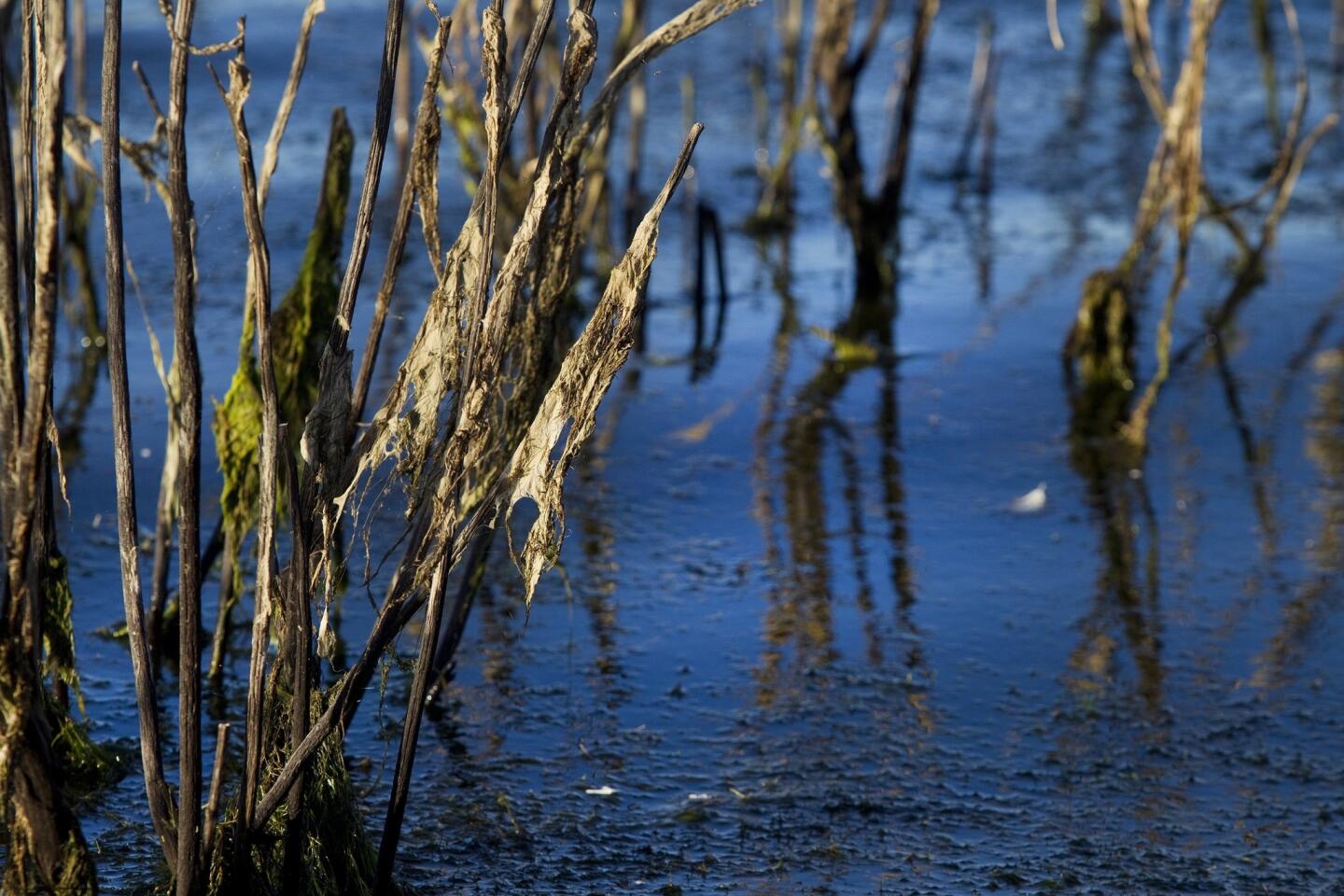
Though the state’s system of capturing and moving water around is one of the most expansive and sophisticated in the world, it’s based on a falsehood. The last 150 years may actually have been abnormally wet. (Allen J. Schaben / Los Angeles Times)
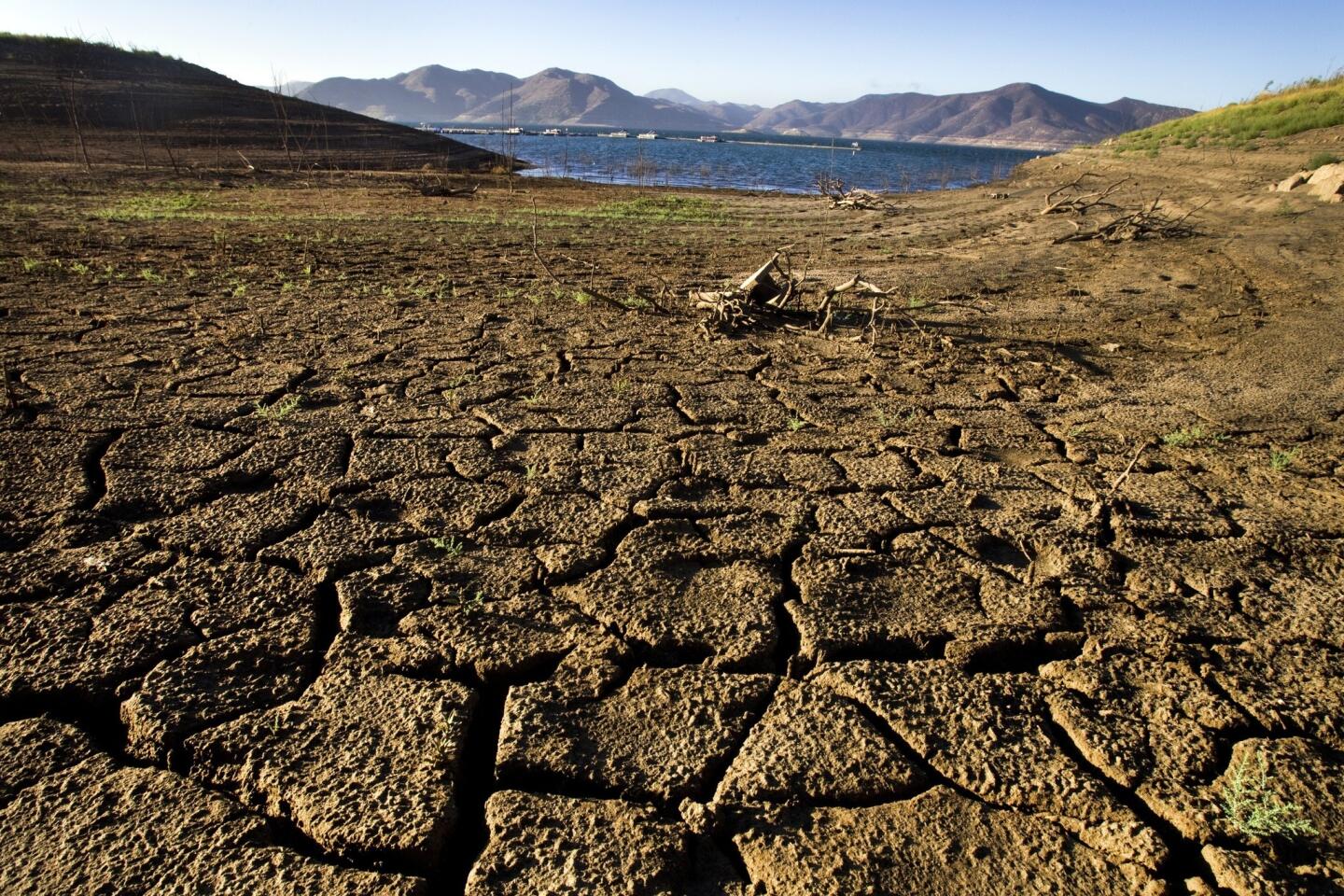
The banks of Diamond Valley Lake in Hemet are dry and cracked. Though agriculture would shrink under chronically dry conditions, California on the whole wouldn’t collapse. (Allen J. Schaben / Los Angeles Times)
Advertisement

Metropolitan Water District managers Sheri Shaffer, left, and Armando Acuna walk down the boat ramp to Diamond Valley Lake’s receding edge. (Allen J. Schaben / Los Angeles Times)
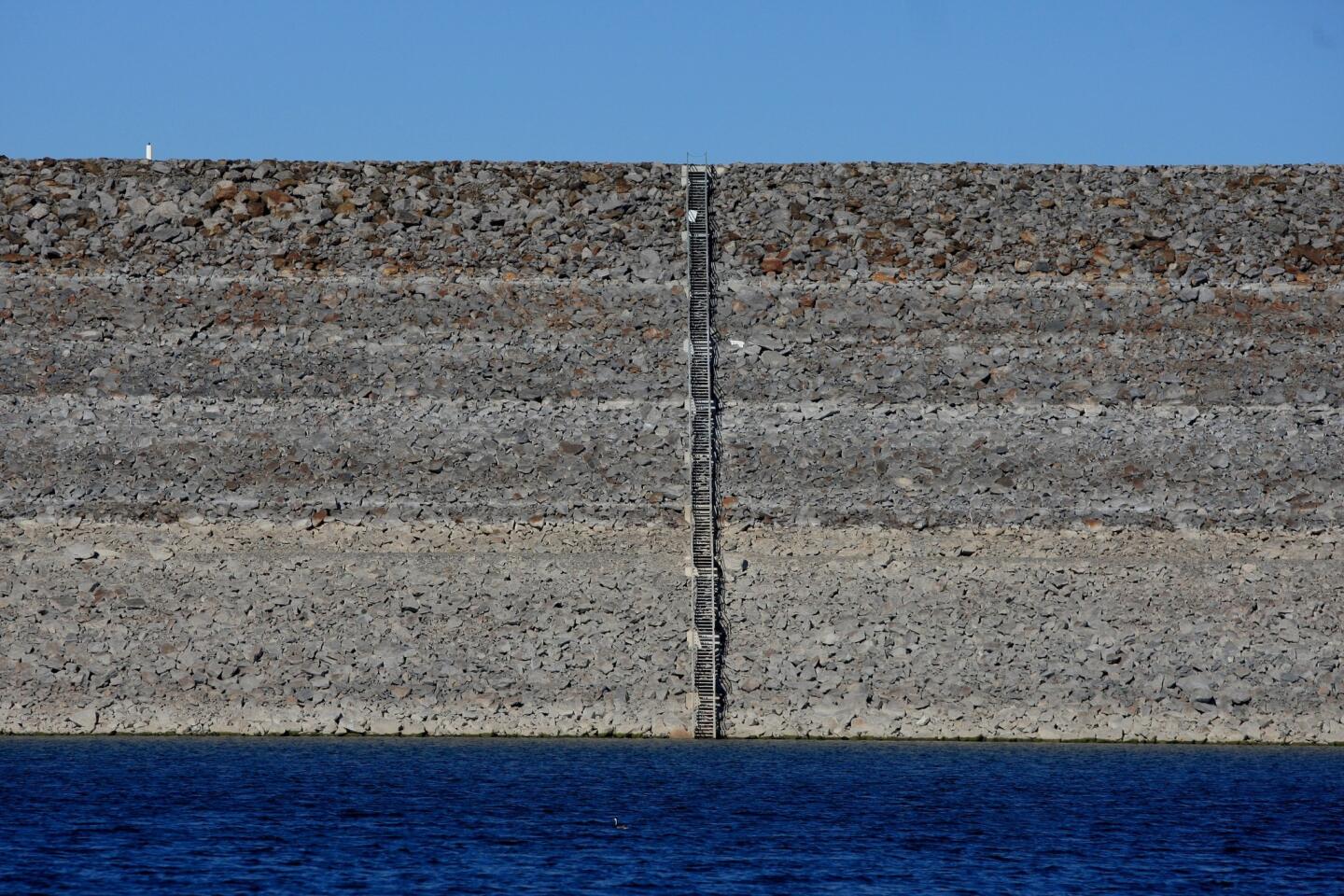
Rings on the dam at Diamond Valley Lake show the dropping water levels. In a mega-drought, scientists say Californians would stop dumping most of their treated sewage and urban runoff from rain storms into the Pacific Ocean and instead add it to their water supply. (Allen J. Schaben / Los Angeles Times)
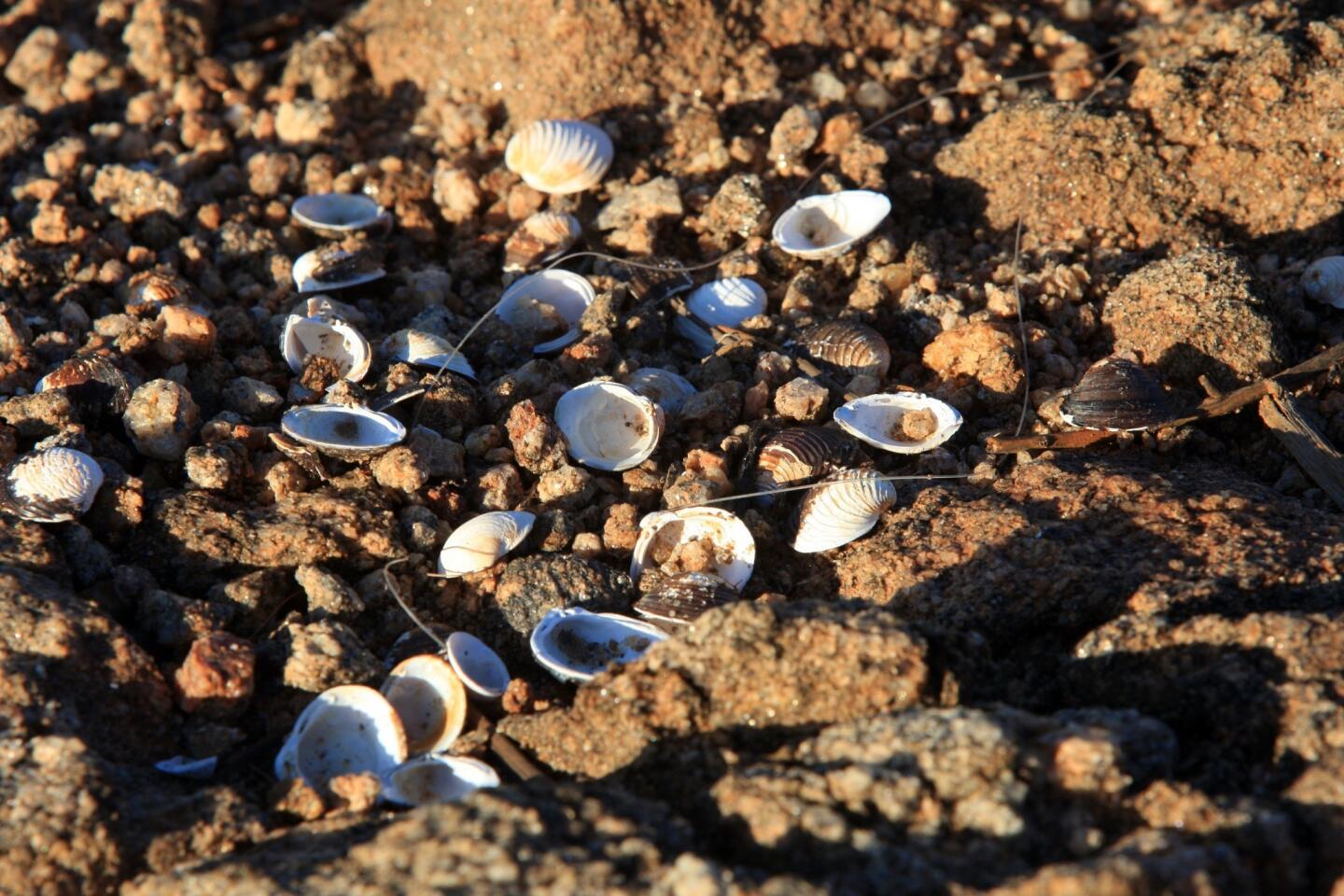
Shells, once under water at Diamond Valley Lake, lie on the exposed shore. The L.A. DWP is already planning for chronically dry conditions with new water-treatment systems. (Allen J. Schaben / Los Angeles Times)
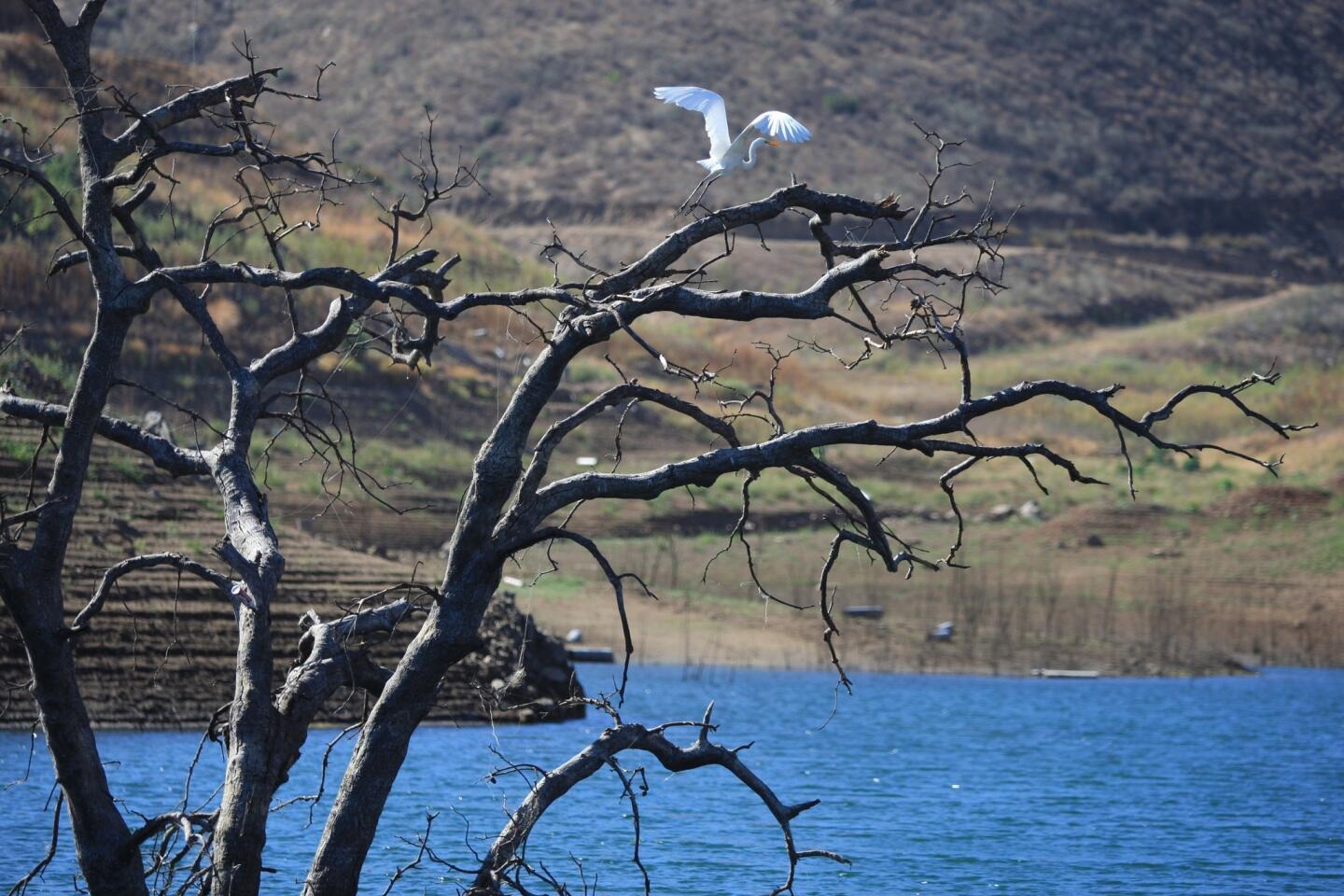
An egret takes flight over the Hemet reservoir. The mega-drought study found that aquatic ecosystems would suffer, with some struggling salmon runs fading out of existence. (Allen J. Schaben / Los Angeles Times)
Advertisement

A Blue heron scouts for food on the receding banks of Diamond Valley Lake in Hemet. “This is a situation that we’re likely to be dealing with for a long period of time,” says Nancy Sutley of the L.A. Department of Water and Power. (Allen J. Schaben / Los Angeles Times)

Canary Island pine trees, a jacaranda tree and pink muhly surround Metal Container Corp. in Mira Loma. The plant has replaced 250,000 square feet of lawn with drought-tolerant landscaping. (Irfan Khan / Los Angeles Times)
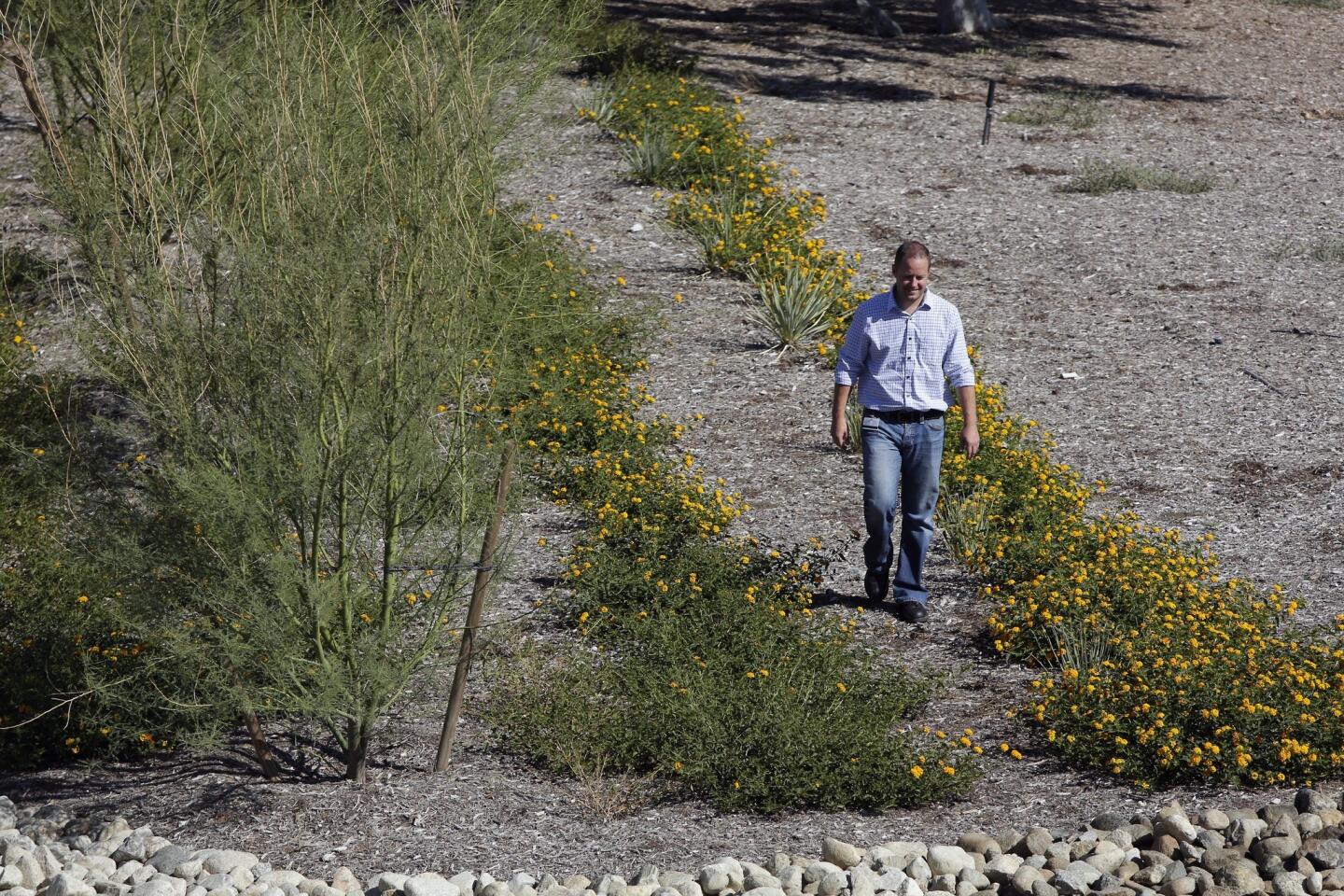
Jason Holtgrewe of Metal Container Corp. walks the grounds of the Mira Loma manufacturing plant, which was once surrounded by six acres of grass that annually slurped up about 15 million gallons of water -- enough to supply roughly 90 Southern California households for a year. (Irfan Khan / Los Angeles Times)

Metal Container Corp. helped pay for its landscape makeover with $360,000 in turf removal rebates, the bulk of it from the Metropolitan Water District of Southern California. (Irfan Khan / Los Angeles Times)
Advertisement

A bee visits a blooming palo verde tree on the grounds of Metal Container Corp. in Mira Loma. A low-water drip irrigation system operated by a controller measures soil moisture around the plant and helps keep water consumption to a minimum. (Irfan Khan / Los Angeles Times)







